Spring's here and its time to smell the roses.
Spring brings all the new roses to nurseries and there are always new perfumed varieties as well. Here's a list of our all-time favourite roses for perfume
The fossil record shows roses were growing in the Colorado Rockies in the Palaeolithic Era, some 32-35 million years ago. The artistic record is a lot
more recent - roses began appearing in motifs in Asian art more than 5000 years ago. All this time natural hybridisation has been taking place as bees
and other pollinating insects shifted the pollen from one rose to the ovary of another. But the process of creating new roses really sped up once humans
got involved a few hundred years ago. There are currently some 100,000 rosarians around the world who breed roses – and this spring we’ll meet some
more of their great successes. Will at be love at first sight? For most us, sight will only be part of the allure. We’ll lean over, bury our nose,
take a deep breath and inhale an irresistible perfume before we really fall in love.
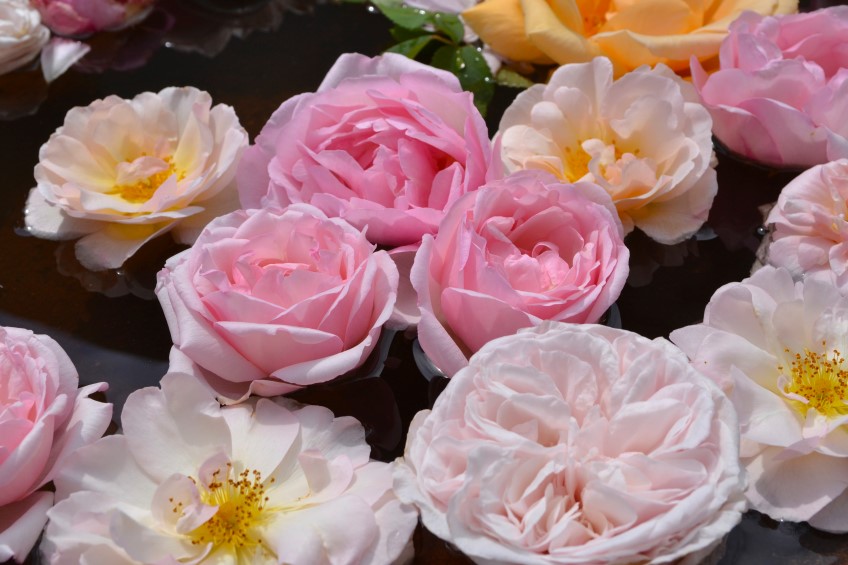
Photos - Linda Ross
Breeding for perfume
Like chocolate, good wine and perfume, rose fragrance is mysterious, complex and hard to define. A rose can smell spicy, powdery, sweet, fruity, woody,
earthy, dark or richly boozy. It was only recently that scientists discovered that essential rose oil contains more than 400 components, including
musk, nasturtium, orris, violet, apple, lemon, clover, fern/moss, hyacinth, orange, bay anise, lily-of-the-valley, linseed, honey, wine, marigold,
quince, geranium, pepper, parsley and raspberry.
With all those wonders to explore, you might wonder why anyone breed a rose with no fragrance. Perfume is bred out of roses when other attributes are given
priority. For florist roses, those priorities include a long vase life, long stems, no thorns, and transport hardiness. The price we pay for those
long-stemmed, long-travelled beauties is a lack of perfume.
While hybridisation is a simple process, making a great rose is not. For every million new seedling roses bred by rosarians only seven individual roses
will make it to market in a process that can take a decade. In Australia the best roses are tested at the National Trial Grounds in Adelaide Botanic
Gardens, with medals are handed out in October. Sight-impaired judges usually assess the perfume awards.
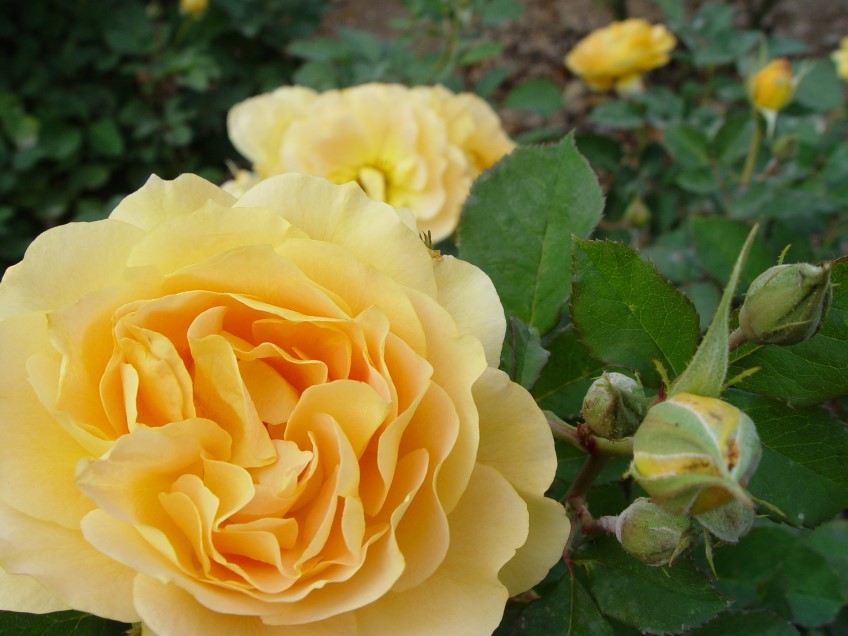
Photos - Robin Powell
Pick a perfume
We are used to choosing roses based on their look, but what if the choice was first for fragrance. What would you choose?
Most highly scented roses are dark colours, with textured petals and lots of petals to the bloom. Red and pink roses are more likely to smell like ‘rose,’
while white and yellow ones lean to orris, nasturtium, violet and lemon. Orange-shaded roses will usually have scents of peach with nasturtium, violet
and clover.
Some roses have unusual scents. ‘Rosa moschata’ smells of honey; the deep purple-red Gallica rose varieties have a wine scent; and tea roses are so-named
because they smell like fresh tea leaves. Generally though, roses fall into three different fragrance groups: fruity, spicy or musky.
Fruity
Roses are available in a virtual fruit salad of scents. The orange-pink hybrid tea rose ‘Rosemary Harkness’ has the fresh aroma of passionfruit. ‘Comtesse
de Provence’ is a Romantica rose with enormous pastel coral blossoms that smell like apricots. ‘Sweet Juliet’ is a David Austin English rose with a
strong citrus scent. ‘Jude the Obscure’, also an English Austin rose smells (and looks!) like peach ice cream.
Spicy
Although it name suggests otherwise, the bright yellow floribunda ‘Honey Perfume’ has a warm, spicy smell. ‘Elle’ is a golden peach hybrid tea with a spicy
fruit fragrance - excellent for cutting. Pepper-scented roses include the lovely old hybrid perpetual, ‘Reine des Violettes’ which is a deep pink bloom
that fades to violet.
Musky
The group of Hybrid Musk roses are known for their musk fragrance and include ‘Felicia’, ‘Cornelia’, ‘Buff Beauty’, ‘Daphne’ and ‘Vanity’.
Maximising fragrance
Beyond the variety, the fragrance power of an individual rose is subject to a whole range of different factors. Scents are strongest early in the morning,
for instance, and this is the time that roses are harvested for rose oil production. The first blooms of summer will smell stronger than those that
open late in the season. The age of the rose bloom is also important. Roses are scented to attract bee pollinators so flowers release their scent when
they are ready to be pollinated. So scent is strongest when flowers are half open. Even the act of cutting a rose can influence fragrance by altering
the release of some phytochemicals. An unremarkable scent may be stronger once the rose in a vase on your table or bedside. Rose fragrance is strongest
on warm, sunny days when the soil is moist, yet two roses have outstanding fragrance no matter how cool and cloudy the day: ‘Chrysler Imperial’ and
Sutter’s Gold. ‘Chrysler Imperial’ even keeps its strong scent after drying, and along with ‘Mister Lincoln’ is one of the best roses for potpourri.
Our favourite fragrant roses
Mr. Lincoln
This velvety, deep red hybrid tea is a long-time best-seller because of its strong fragrance. Blooms are held on stiff, upright stems on shrubs 1.7m tall
and 0.7m wide. Comes as a bush, climber or standard.
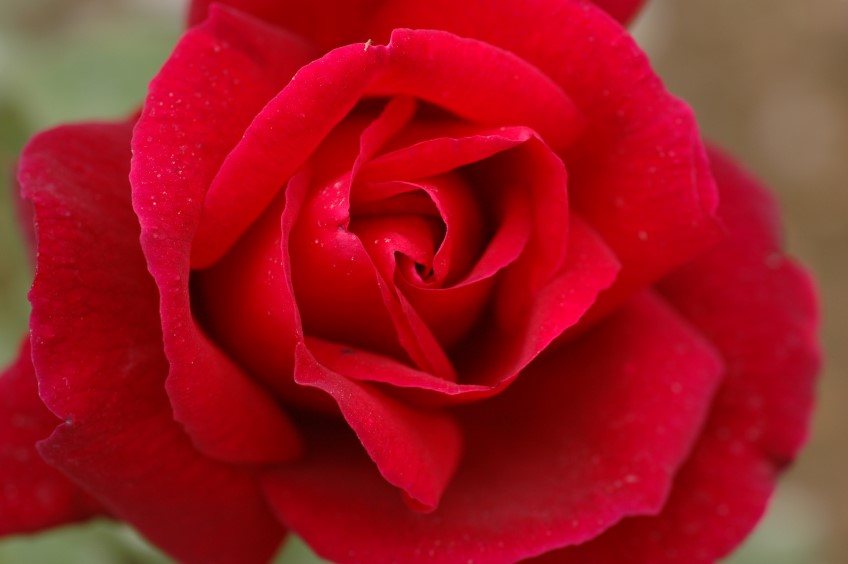
Photos - Robin Powell
Clare Austin
A David Austin-bred pillar or low climbing rose to 1.5m, this has pale lemon buds that open to cupped white blooms. The intense musk fragrance won it the
Gold Medal perfume award in 2011.
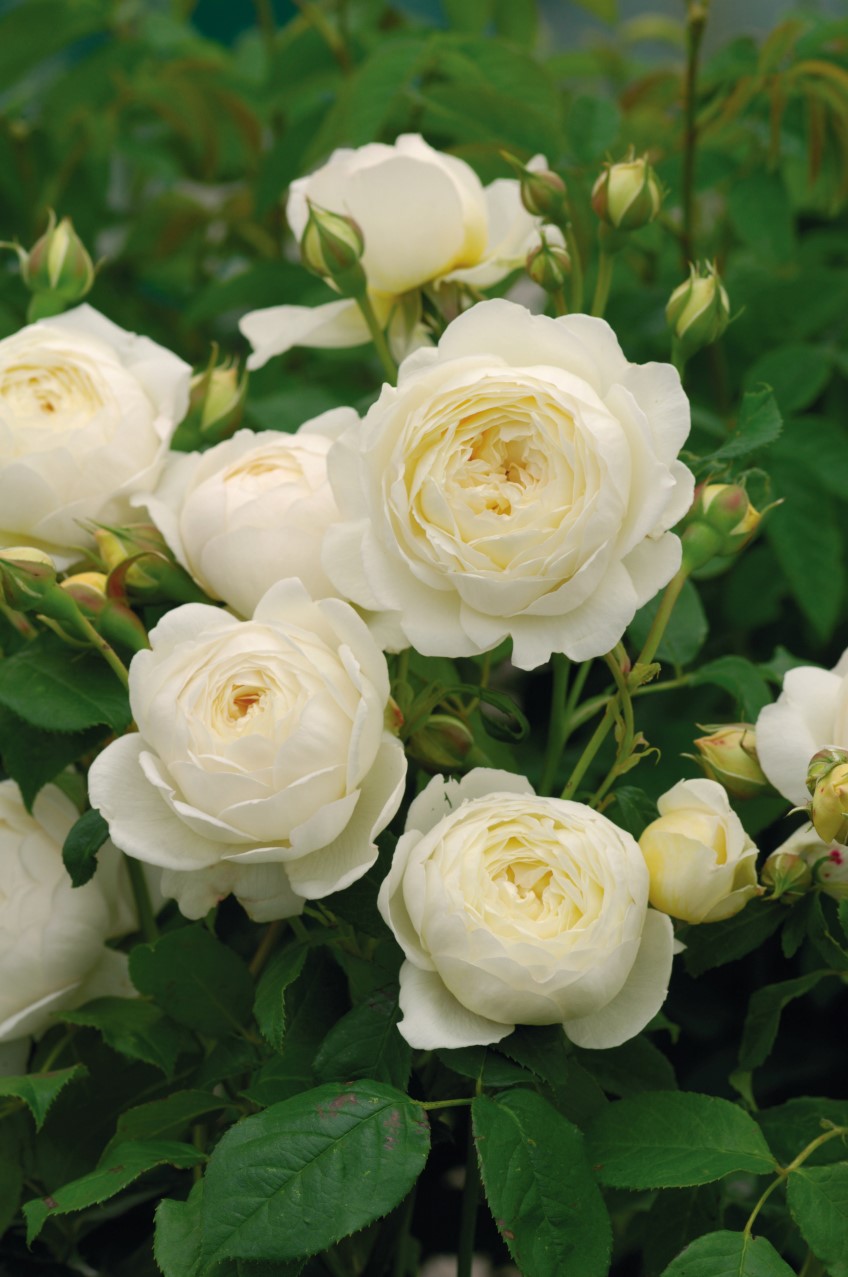
Photo - David Austin Roses
Mme Isaac Periere
Sandra Ross thinks this cerise/magenta climber is the most fragrant rose of all roses. Its an old rose, with a classic rose scent. Grows to 3m tall and
needs support.
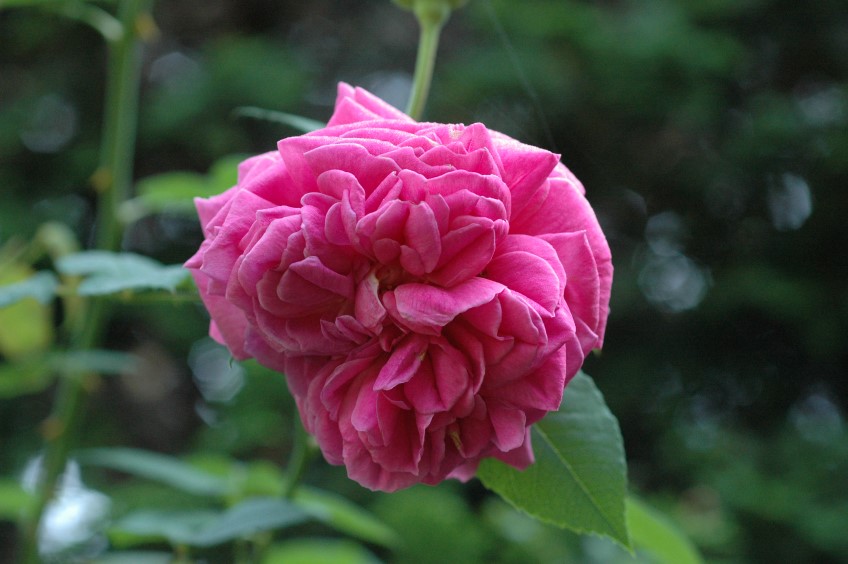
Photo - Sandra Ross
Double Delight
A hybrid tea with a long flowering season, this multi-award winning rose has a sweet spicy scent. It has a bushy habit, growing to about 1.6 with
a 1m spread.
Firefighter
This new red rose is saturated with perfume and the long-stemmed blooms last well cut. Fans of Oklahoma’ or ‘Papa Meilland’ you will love this one. Grows
to 1.6m tall.
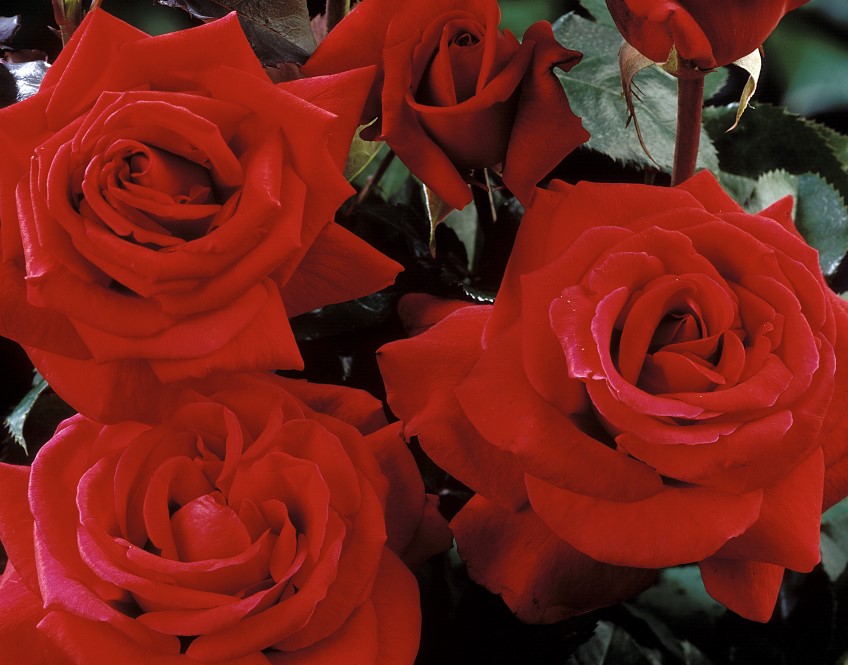
Photos - Swanes Nursery
Pope John Paul II
A hybrid tea rose, with luminescent white flowers. This strong grower won the Gold Medal for perfume in 2010 as well as Rose of the Year.
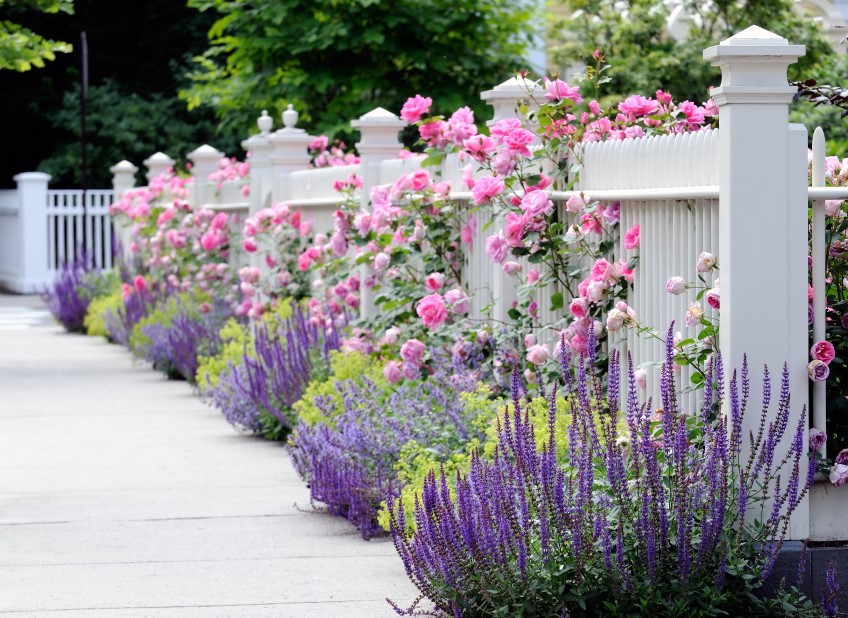
Photo - Jorge Salcedo/Shutterstock.com
Perfume Passion
This long-flowering, carefree, almost thornless rose was winner of four medals in 2012 including the Gold Medal, Best Hybrid Tea, Most Fragrant and Best
Rose of Trial. Grows 1.5m high.
Text: Linda Ross